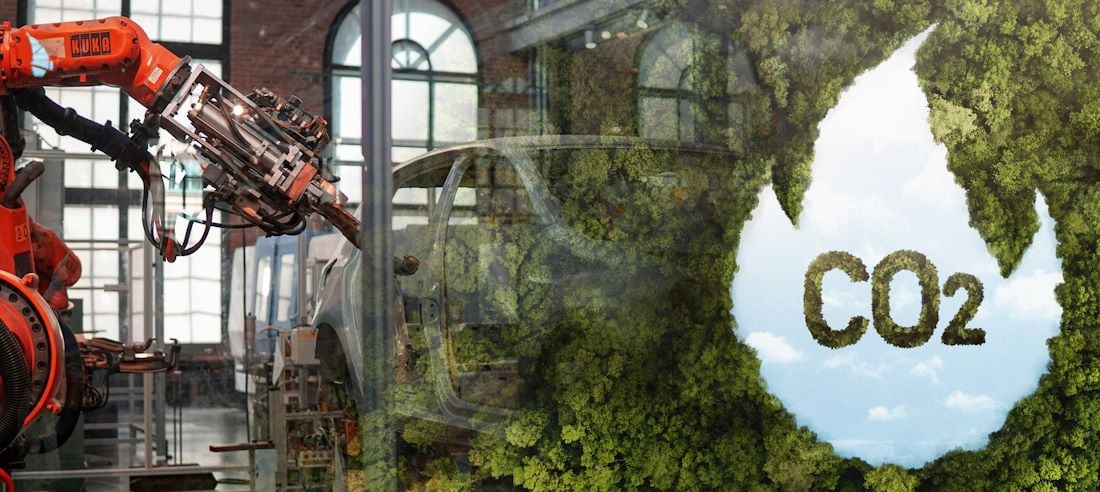Some of my recent articles have circled around an apparent antagonism between different schools of thought in sustainability. I mentioned the two main contemporary concepts for leading business and society through the transformation to sustainable development: efficiency and sufficiency. The former aims at getting the same output with less input, whereas the latter calls for reducing output (mainly by reducing consumer needs). If there was a slight disposition to support sufficiency hidden between the lines of my blog posts, I want to clarify once more that we absolutely need both strategies. And just in case anyone hasn’t read and learned by heart the proposals of the 2009-published book “Factor 5: Transforming the Global Economy through 80% Improvements in Resource Productivity”, the bible of efficiency innovation, let me review the most important points of the book in this article in order to highlight the importance of efficiency and its inevitable contribution to a sustainable world.
Countering the Rebound Effect: Annual Energy Tax Rise
The baldest and cleverest idea the book proposes has, at the same time, been around for a long time. What Green parties called ecological tax reform in the 1980s, the “Factor Five” authors reinvent. In order to prevent the rebound effect from making efficiency gains ineffective, the authors call for an annual increase in energy costs. (Rebound effect? Ah yes: when consumption goes up as a consequence of better efficiency followed by reduced costs arising from the efficiency.) In the same way, resource productivity needs to rise as resources become more expensive – that’s the idea. Or like the way the productivity of work has risen simultaneously with real wages since the early days of industrialization. Likewise, material and energy costs should rise in step with efficiency gains. On page 319, Ernst Ulrich von Weizsäcker draws this parallel. The book’s chapter on the ecological tax reform is available for free online (scroll to “part two, chapter 9”). Weizsäcker:
[The] parallel development of labour productivity and gross wages has been the backbone of the Industrial Revolution and has surely benefitted essentially all people, in some way. Recognizing the logic behind this parallel development, investors have always exploited any given opportunity of increasing labour productivity, knowing there was hardly any safer bet for the future. However, at a time of high unemployment and scarce natural resources, progress by increasing labour productivity has become less rational from a macroeconomic point of view. Moving investors to give a higher priority to resource productivity would make today’s societies more prosperous and more competitive.
Clearly the best way of moving investors in the new direction of steeply rising resource productivity would be a long-term and predictable trajectory of rising resource prices.
Anyone who may doubt industry’s responsibility to fight global warming will find good reason to change their mind in the following paragraph from Ecos magazine. It may even convince you to favor ecological tax reform and especially the manufacturing industry’s share:
The reality is that, by and large, consumers will consume what is important to them, and producers will produce what is profitable to them. Hence, as Ernst von Weizsäcker has long advocated, resource productivity should become ever-more profitable for producers, and resource-saving goods and services should become more affordable to consumers than conventional, resource-wasteful options.
Resource Productivity Increase: Multiple Revenue
Factor Five argues in favor of resource productivity not only because it contributes to saving the world. It also pays off, as the following lines taken from page 15 of the publicly available introduction show (PDF link):
As The Natural Edge Project explain in their upcoming publication Cents and Sustainability, investments in resource productivity transform and stimulate the economy in three main ways.
1. First, investments in resource productivity, such as building energy efficiency, have a higher economic multiplier than general expenditure, as resource efficiency investments provide a tangible financial return on investment as well as usually providing additional productivity improvements. A recent 2007 study by McKinsey & Company 23 has found that, through investing in energy efficiency, global emissions could be reduced by 20-30 per cent by 2020 without harming business profitability or economic growth at all. […] 2. Secondly, investments in improving resource efficiency and recycling have a higher economic welfare outcome than general expenditure on many goods and services because they reduce demand for energy, water and virgin resources and thus delay (and even in some cases prevent) the need to spend billions on new energy and water supply infrastructure and new extractive industries. Delaying this spending frees up capital to be invested in other much needed infrastructure. […] 3. Thirdly, jobs are created locally by these green initiatives.
Indispensable for High Efficiency Gains: A Holistic Approach
Considering that most efficiency consultants usually aim at possible efficiency gains in the range of 10-20%, the Factor Five promise of 80% is, to say the least, astonishing. Their case studies show that 80% is indeed possible. However, apart from the practical feasibility in individual cases, there is an underlying shift of paradigm which explains the overwhelming figures and unites all of the best case examples given. On page 34 of the book, or page six of the framework chapter (PDF), the authors explain how thinking beyond the common limits of an individual discipline can free your vision and liberate a maximum savings potential:
[Many] energy, water and materials efficiency projects have only dealt with specific elements, say of a heating, ventilation and air-conditioning (HVAC) system in a building, an industrial sub-process, or a particular part of a vehicle or product, rather than considering the wider system. In many ways this is why such projects have failed to capture the full resource productivity opportunities, and hence given a false appreciation of their potential. This is due to the fact that in the past many of the savings captured from efficiency initiatives have been smaller than what would have been theoretically possible if the team of designers had worked together to consider the whole system.
Cutting 90% of Energy Consumption: The Passive House
Now what does all this mean? As I said above, the book is not short on ideas about best practices. In the building sector, for instance, a passive house can use one tenth the energy for space heating and cooling used by an average building. In concrete figures: the average building in Germany in 2008 used more than 160 kWh per m² per year for space heating. A building that follows the passive house standard, in contrast, is not allowed to consume more than 15 kWh/m²/year! The overall primary energy consumption in a passive house, which includes hot water and household electricity, is limited to 120 kWh/m²/year. How is that possible? Through six main differences to a normal house. First of all, a passive house in a cool climate has large windows facing the sun to capture a maximum of natural thermal energy. Second, walls, roofs and foundations are well-insulated to U-values that “typically [range from] 0.10–0.15W/m²K in central Europe, and [from] 0.05–0.1W/m²K in northern and eastern Europe”, says page 73 of Factor Five. The third point provides for the installation of new, but unfortunately also expensive, windows with exceptionally better insulating capacity. U-values for these windows are 0.7–0.85W/m²K (including the frame). The fourth point deals with creating air barriers. “Careful sealing of construction joints, and sealing of all service penetrations are used to achieve this.” Point five is the main feature and is closely linked to the almost airtight insulation: an electric ventilation and heat exchange system along with a small heating facility. The last point is the one that makes a passive house so compelling. The excellent insulation makes it possible to not only use solar heat, but also all the other heat sources one usually forgets. Electric appliances like the dishwasher, humans and pets all give off heat that is conserved within the building.
Two Big Squanderers in Our Households: Toasters & Ovens
Speaking of household appliances, even for the oldest and most well-tried technology, there is lots of room for improvement, as the following two examples show (see page 82 of the book, or page 16 of the residential buildings sub-chapter [PDF]):
Toasters lose heat through the top of the toaster that is traditionally open. Providing an automated lid which shuts while the toast is being toasted alone reduces energy use by approximately 34 per cent.
Conventional ovens or ranges are inherently inefficient because in order to heat up food, they must first heat up about 35 pounds of steel and a large amount of air. Tests indicate that only about 6 per cent of the energy output of a typical oven is actually absorbed by the food.
Construction: Geopolymer instead of Portland Cement
Concrete is a main ingredient for both infrastructure and buildings. Its major component, apart from water, is Portland cement, which needs to be heated to more than 1400°C in order to calcinate (see Wikipedia article). This extreme temperature requirement is what makes it so vulnerable to criticism and is one of the reasons why cement production contributes 6% of all greenhouse gas emissions globally. That’s why Factor Five’s authors say that, instead of Portland cement, cement derived from geopolymers should be fostered. As a related article in Ecos magazine explains:
Geopolymers are formed by reaction of an aluminosilicate powder with an alkaline silicate solution and require no special curing. Even better, they can be manufactured from industrial waste stock, like the vast amounts of fly ash that are produced from coal combustion. If these waste streams reduce over time, geopolymers can be made from very commonly available materials, such as clays.
Because no calcination is involved in making geopolymer cement, the article states that its carbon emissions are only 10-20% of those generated by conventional Portland cement. The current state of its research and development, as well as practical applications, can be seen at the Geopolymer Institute website, for instance.
Geopolymers, more efficient toasters, passive houses – these are only a few examples of the immense potential for efficiency improvement. Some are easy to put into practice, some require more fundamental changes. What they all have in common, however, is they make it more clear than ever, even after the three years since Factor Five was published, that drastically increasing resource productivity is not an option. It is our obligation.
Further Reading
- von Weizsäcker, E., Hargroves, K., Smith, M., Desha, C. and Stasinopoulos, P. (2009): Factor 5: Transforming the Global Economy through 80% Increase in Resource Productivity, Earthscan, UK and Droemer, Germany
- Smith, M. and Hargroves, K (2010): Cents and Sustainability: Decoupling Economic Growth from Environmental Pressures, (In Press) The Natural Edge project, Earthscan, London
- knowtheflow: 6 Options to Maintain Current Lifestyles with Far Less Raw Materials: “With Both Eyes Open”
- knowtheflow: Better, Different, Less – Green Economy Revisited
Article image CC BY 2.0 by woodleywonderworks, slightly edited by Moritz Bühner.





